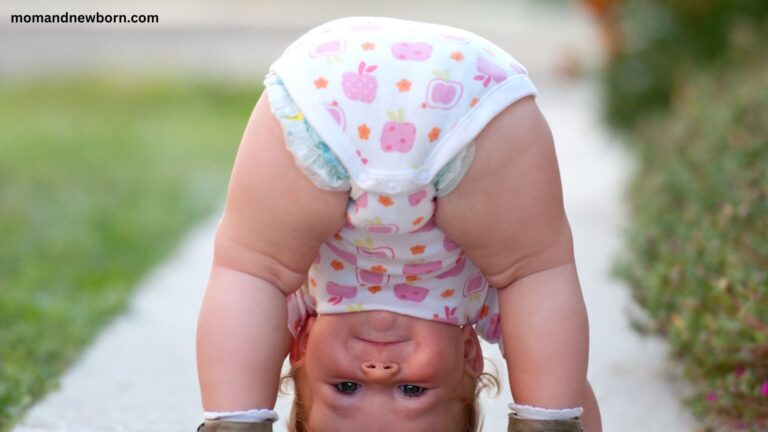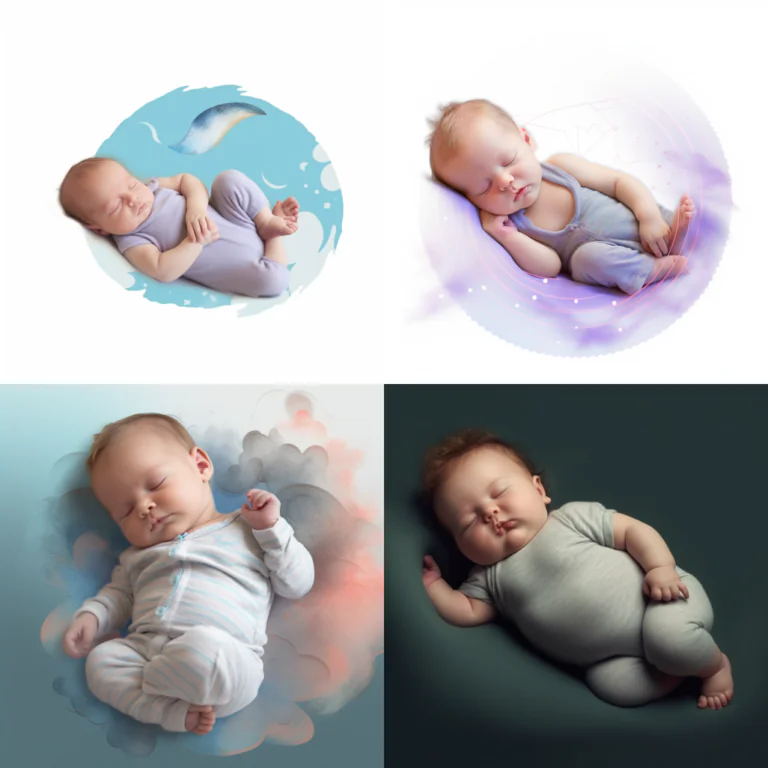Dive into Learning: Teaching Your Baby to Swim!
Are you eager to introduce your little one to the wonders of swimming? The journey of teaching a baby to swim is an exciting and rewarding experience. From the first splash to independent paddling, each step brings them closer to water confidence and safety.
In this guide, we will explore the age at which babies can swim naturally, when to start teaching them, and how to make their introduction to swimming a fun and memorable adventure.
What age can babies swim naturally?

Babies can be introduced to the water at a very young age, but the ability to swim independently and safely takes time to develop. Infants have a set of reflexes, such as the “swimming reflex” and the “diving reflex,” which help them hold their breath and move in the water. However, these reflexes aren’t sufficient for actual swimming and start to fade around 6 months of age.
Formal swimming lessons can be started when a child is around 1 year old, but the age at which a child can swim independently varies. Some children may start to swim confidently around 3 to 4 years old, while others might take longer. It is essential to always supervise children around water, even if they can swim, as drowning is a leading cause of accidental death for young children.
When should I start teaching my baby to swim?
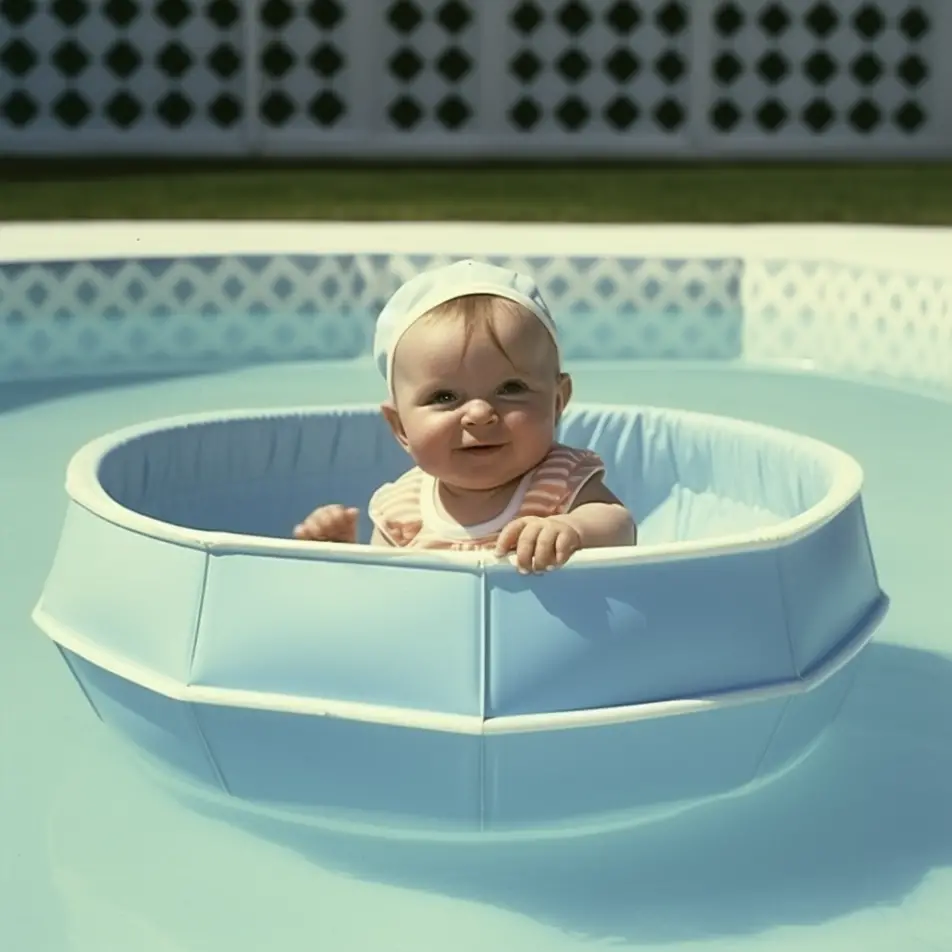
You can introduce your baby to the water and familiarize them with it as early as six months. However, formal swimming lessons are generally recommended for children around 1 to 2 years old. This is when they are developmentally more capable of learning basic water safety skills and swimming techniques.
When starting swimming lessons, finding a qualified instructor and a program designed specifically for young children is important. These programs often focus on water comfort, safety skills, and basic swimming techniques through fun and age-appropriate activities.
Remember that every child is different; some may be more comfortable in the water than others. It’s essential to be patient and supportive during the learning process and to always supervise your child closely around water, regardless of their swimming ability.
How do I introduce my baby to swimming?
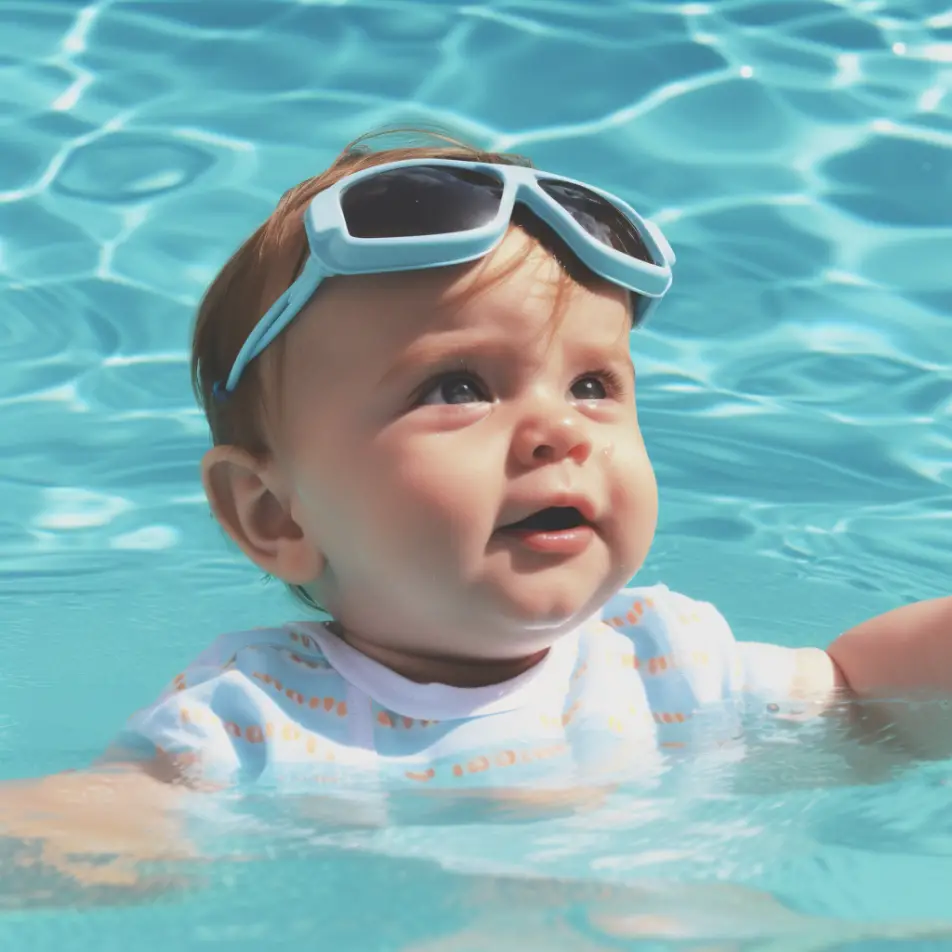
Introducing your baby to swimming can be a fun and rewarding experience for both of you. Here are some steps and tips to help you get started:
- Choose the right time: Ensure your baby is in good health, well-rested, and fed before introducing them to the water. Avoid swimming right after a meal, as it may cause discomfort.
- Start with a warm, shallow pool: Choose a warm pool (around 32°C / 90°F) to help your baby feel comfortable. Start in a shallow area where you can easily support your baby.
- Gradual exposure: Slowly ease your baby into the water, making them familiar with the sensation. You can start by sitting on the pool’s edge and letting your baby’s feet touch the water.
- Hold your baby securely: Maintain a firm yet gentle grip on your baby, always supporting their head and neck. Hold them close to your body, making them feel safe and secure.
- Encourage water exploration: Let your baby splash, kick, and play in the water. Use toys and games to make the experience fun and engaging.
- Teach basic water safety skills: As your baby becomes more comfortable in the water, you can start teaching them basic safety skills, such as holding onto the pool’s edge, floating on their back, and blowing bubbles to practice breath control.
- Attend structured swim classes: Consider enrolling your baby in a swimming program for infants and toddlers. These classes typically focus on water comfort, safety skills, and basic swimming techniques through age-appropriate activities.
- Be patient and consistent: Your baby may need time to adjust to the water, and their comfort level may vary from one day to the next. Remain patient, and try to make the experience as positive and enjoyable as possible.
- Always supervise: Regardless of your baby’s swimming ability, keep a close eye on them in or around the water.
Note: If you plan on heading to the beach with your little one, our article titled “Beach Time Fun: Top BPA-Free Toys for Babies and Toddlers” could be quite helpful.
How do I teach my baby to float in water?
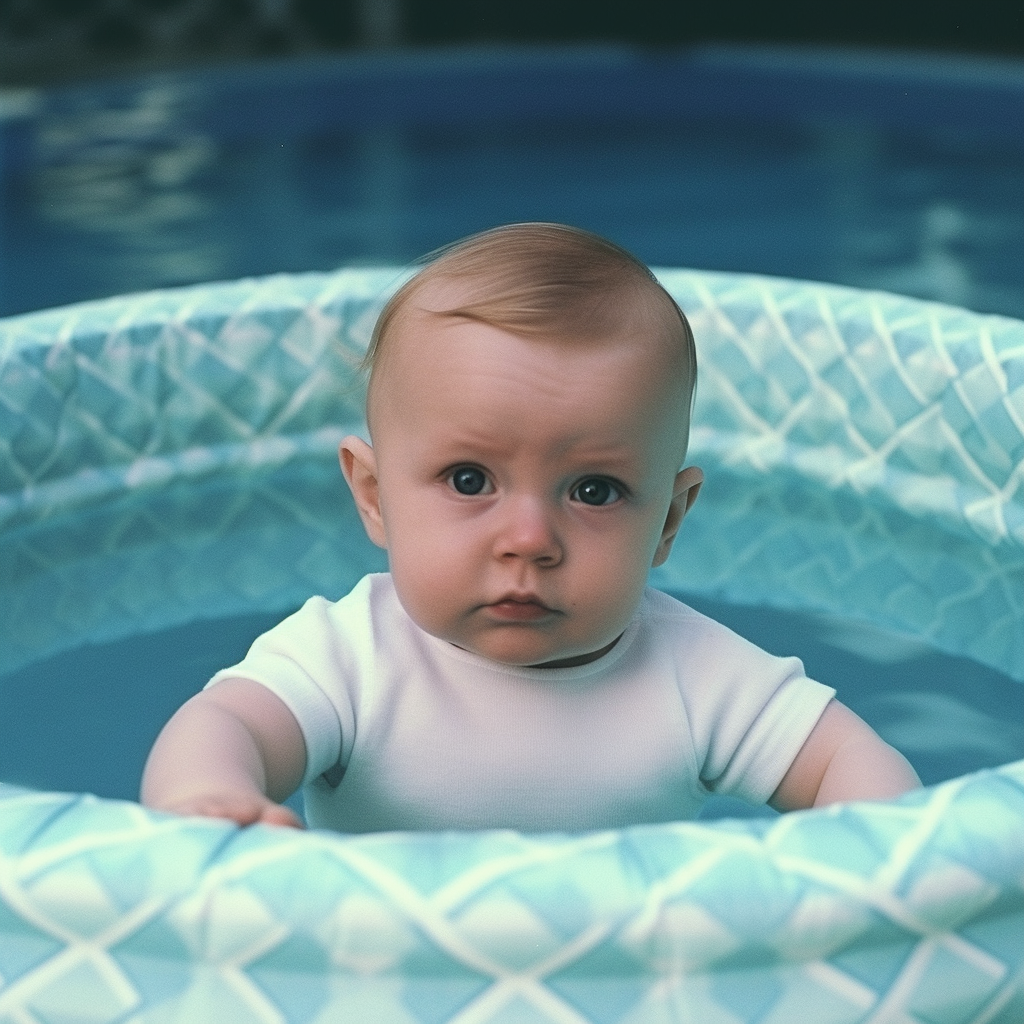
Teaching a baby to float in water is an important skill that can help keep them safe around water. However, it’s important to note that infants should never be left unattended near any type of water. Here are some steps you can take to help teach your baby to float:
- Start with a shallow pool: Find a shallow pool, like a baby pool or a small section of a larger collection, where your baby can stand and feel comfortable.
- Get your baby comfortable in the water: Gradually introduce them to the water and get them comfortable with it. Hold your baby close and let them feel the water around them.
- Show your baby how to float: To start teaching your baby to float, hold them on their back with their head supported by your hand. Keep their hips with your other hand, and slowly lower them into the water. Encourage your baby to relax and float, and show them how to spread their arms and legs out.
- Practice regularly: Consistency is key when teaching a baby to float. Practice periodically in short sessions, and gradually increase your baby’s time in the water.
- Use flotation devices: To help your baby feel more comfortable in the water, you can use a flotation device like a floatation suit or floaties. However, these should never replace adult supervision.
Note: To help your baby become familiar and comfortable with the pool, consider bringing bath toys along with you. Bath toys can provide a sense of familiarity and entertainment, making the pool experience more enjoyable for your little one. By incorporating familiar toys into their pool time, you can help them gradually adjust and develop a positive association with swimming.
How do you hold a baby in water?
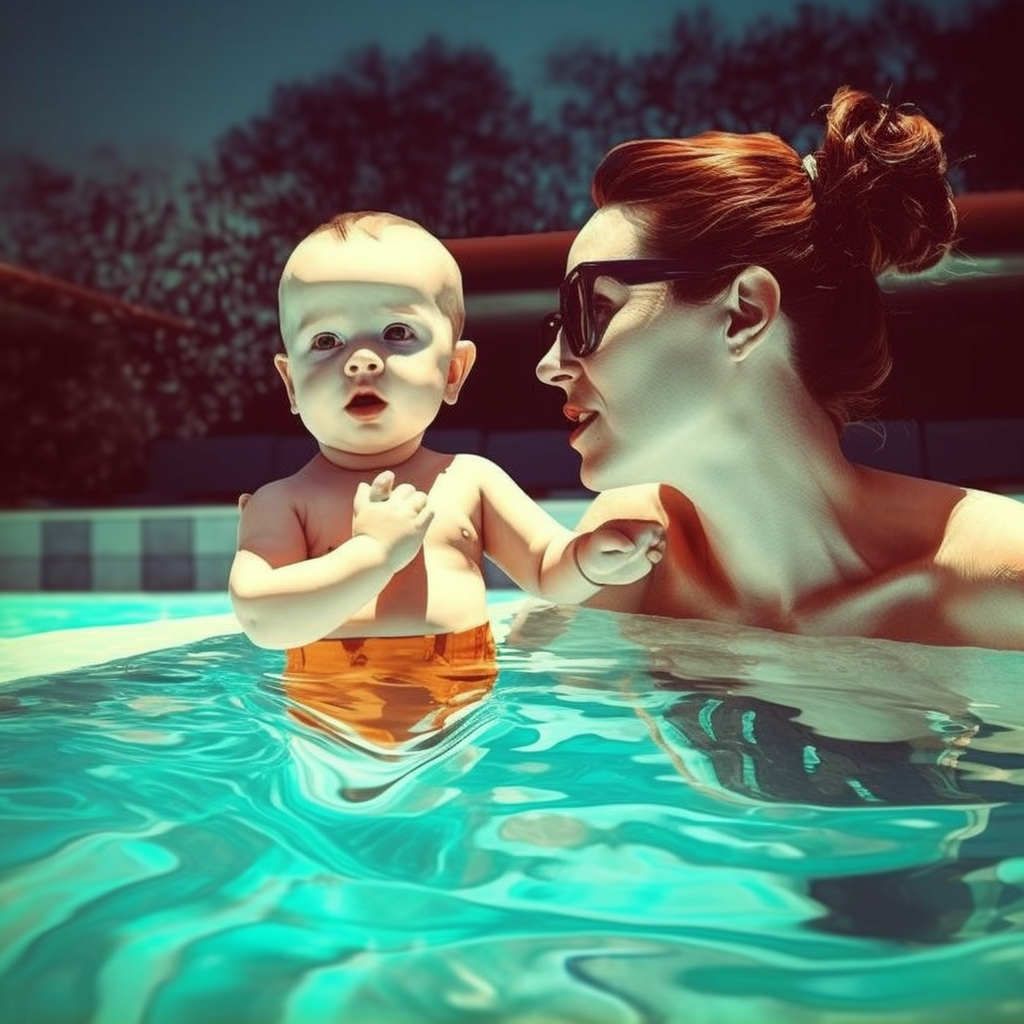
Holding a baby in water requires extra care and attention to ensure their safety. Here are some steps to follow when holding a baby in water:
- Support your baby’s head: When holding a baby in the water, supporting their head and neck is important. Place one hand behind your baby’s neck and head, and use your other hand to help their bottom.
- Keep your baby close: Keep your baby close to your body, with their head and face above the water. Keep a secure grip on your baby always, and don’t let go.
- Be mindful of your baby’s comfort: Make sure your baby is comfortable and happy in the water. Watch for signs of discomfort or distress, like crying or fussing.
- Keep your movements slow and gentle: When holding a baby in the water, it’s important to keep your movements slow and gentle. Avoid sudden movements or jerky motions that could startle or upset your baby.
- Never leave your baby unattended: Never leave your baby alone in the water, even for a moment. Always watch your baby closely and be prepared to take action if needed.
How long does it take to teach a baby to swim?
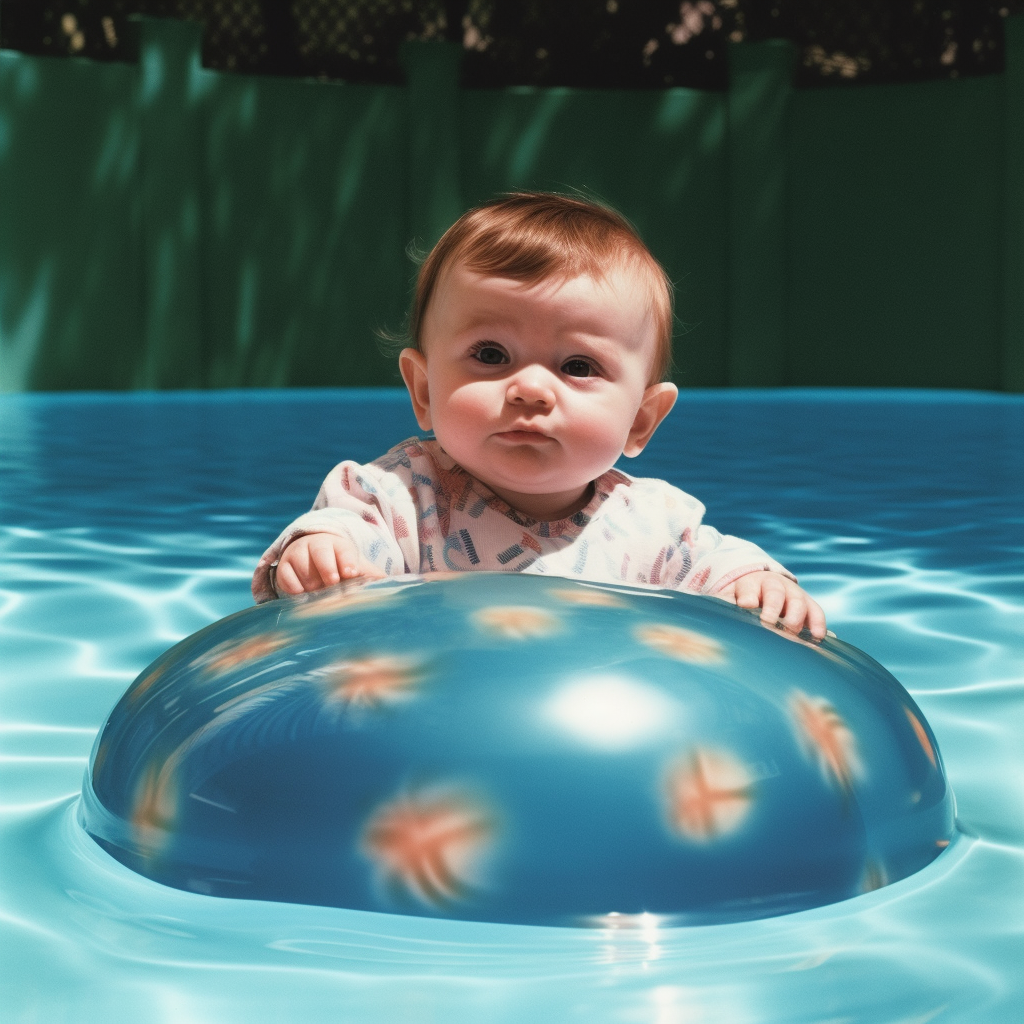
The time it takes to teach a baby to swim depends on various factors, such as the child’s age, developmental stage, comfort level in the water, and individual learning pace. Some children may become comfortable and learn basic swimming skills quickly, while others might take more time.
Typically, teaching a baby or toddler to swim involves multiple stages, starting with water acclimation, basic water safety skills, and then progressing to independent swimming. This process can take several months to a few years, depending on the child and the consistency of the lessons.
It’s important to remember that the goal of teaching a baby or toddler to swim is not only about learning the mechanics of swimming but also about building water confidence, safety awareness, and a positive relationship with the water. Be patient, consistent, and supportive, and remember that every child’s journey will be unique.
Can babies go in chlorine pools?

Babies can go in chlorine pools, but there are some precautions you should take to ensure their safety and comfort:
- Age: It’s generally recommended to wait until your baby is 6 months old before taking them into a chlorinated pool. Younger infants have more sensitive skin and a less developed immune system, which makes them more susceptible to potential irritations or infections.
- Water temperature: Babies have a harder time regulating their body temperature than adults, so choosing a pool with a warmer water temperature, ideally around 32°C (90°F), is important.
- Skin protection: Rinse your baby with clean water before and after swimming to help wash off any chlorine residue. After swimming, you can also apply a gentle, hypoallergenic moisturizer to your baby’s skin to prevent dryness and irritation.
- Pool cleanliness: Choose a well-maintained pool with proper chlorine levels to reduce the risk of infections. Remember that over-chlorinated pools can cause skin, eye, and respiratory irritations.
- Swim diapers: Make sure your baby is wearing a swim diaper designed for use in the water. Regular diapers can become heavy and ineffective when wet.
- Sun protection: If the pool is outdoors, protect your baby’s delicate skin from the sun using a wide-brimmed hat, UV-protective clothing, and a broad-spectrum sunscreen with SPF 30 or higher. Keep in mind that sunscreen should only be used on babies who are 6 months or older.
- Supervision: Always watch your baby closely while in or near the water, regardless of their swimming abilities.
Note: For optimal hygiene, it is advisable to give babies a bath upon returning home from the pool. To learn more about the importance of post-pool bathing for babies, feel free to consult our informative guide on the topic:
Clean And Calm: A Guide To Bathing Your Baby Safely And Comfortably
What can I put my 6 month old in for swimming?
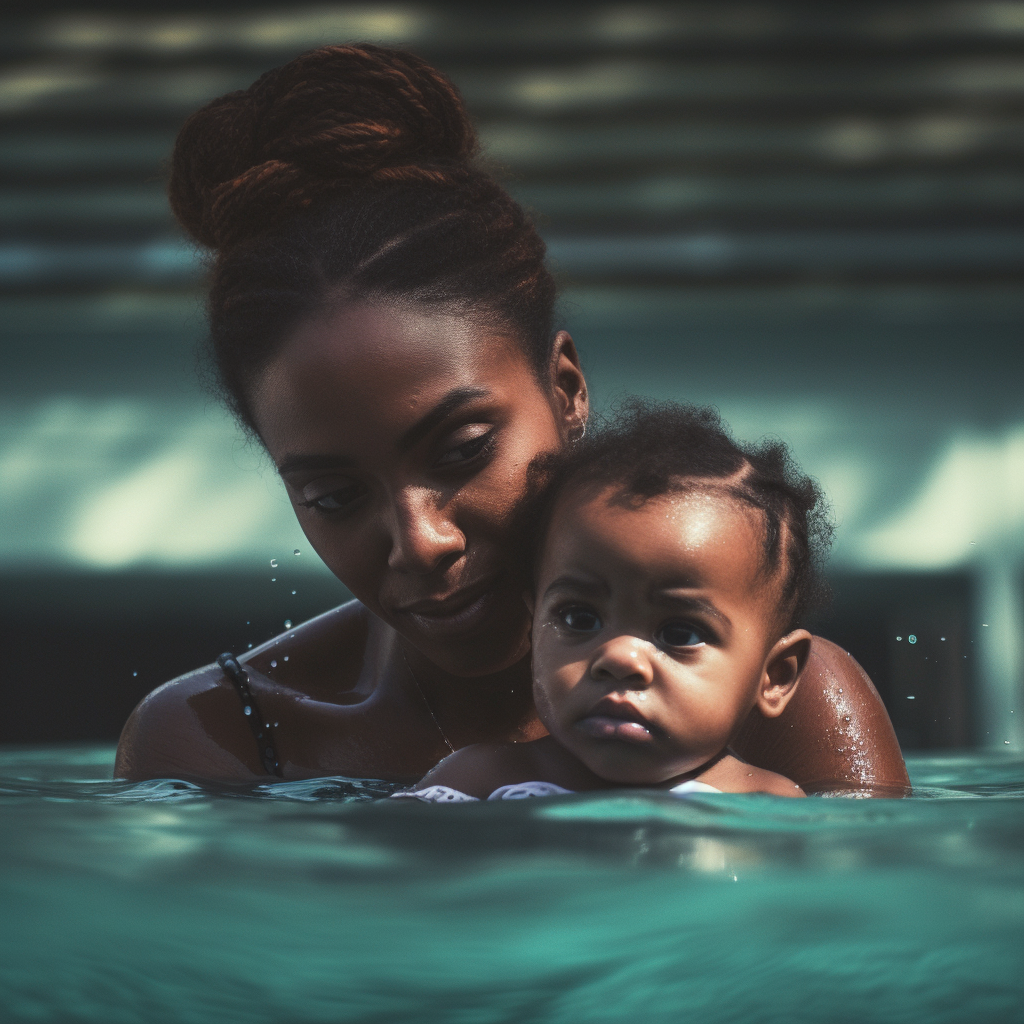
For a 6-month-old baby, you’ll want the right gear to ensure their safety and comfort while swimming. Here are some items to consider:
- Swim diaper: A reusable or disposable swim diaper is essential to prevent accidents while in the pool. Regular diapers are unsuitable for swimming, as they can become heavy and ineffective when wet.
- Swimsuit: A comfortable, well-fitting swimsuit is important for your baby. Look for swimwear made from quick-drying materials and designed for easy diaper changes.
- Rash guard: A rash guard or swim shirt can provide extra protection from the sun’s harmful rays and reduce the risk of skin irritation from pool chemicals.
- Baby wetsuit or thermal swimsuit: If you are swimming in a cooler pool, a baby wetsuit or thermal swimsuit can help keep your baby warm and comfortable.
- Sun protection: If swimming outdoors, use sun protection accessories like a wide-brimmed hat, UV-protective clothing, and sunglasses. For babies 6 months and older, you can also apply a broad-spectrum, water-resistant sunscreen with SPF 30 or higher. Remember to reapply sunscreen as needed, according to the product’s instructions.
- Baby float or swim ring: For added safety and support in the water, consider using a baby float or swim ring specifically designed for infants. These devices should always be used with close adult supervision and are not a substitute for hands-on support.
Is it OK to submerge baby’s ears?
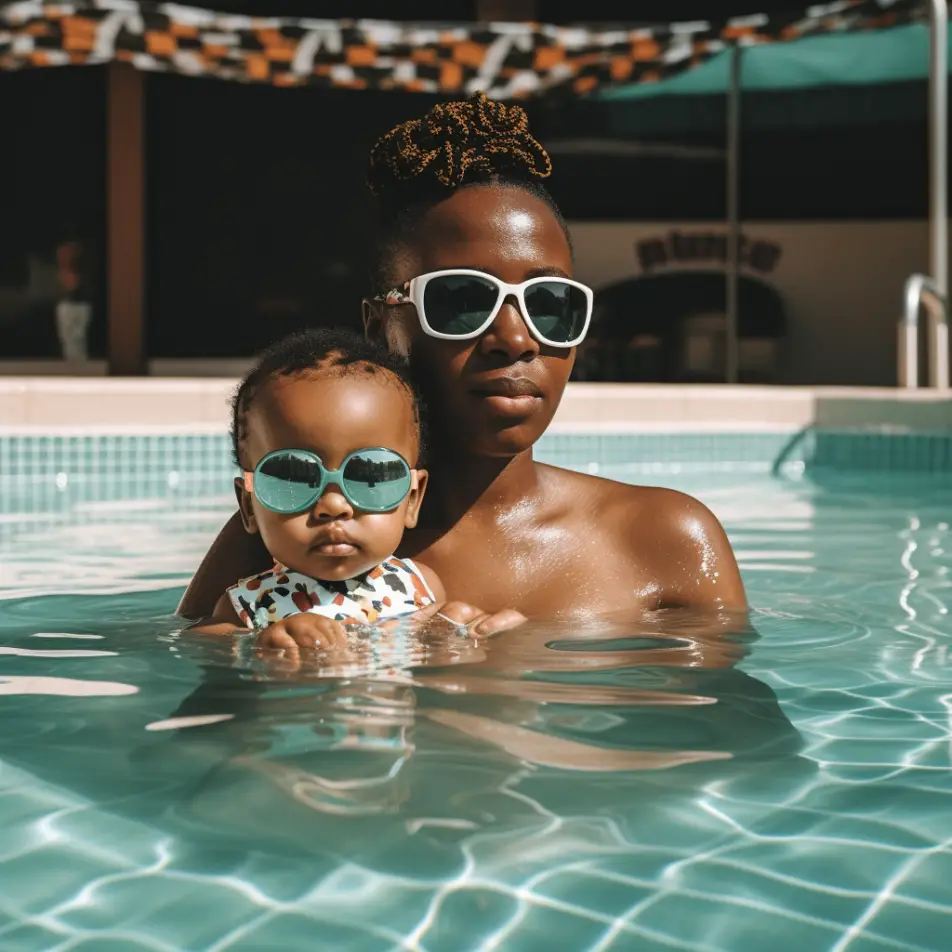
It is generally safe to submerge a baby’s ears in water, as their ears have a natural mechanism to prevent water from entering the middle ear. The eustachian tubes connect the middle ear to the back of the nose and help equalize pressure and drain fluid. The eustachian tubes are more horizontal in babies and young children, making it more challenging for water to enter the middle ear.
However, there are a few precautions to keep in mind:
- Avoid forceful submersion: When submerging your baby’s ears, avoid doing so forcefully or suddenly, as this can cause discomfort or disorientation.
- Watch for signs of discomfort: If your baby appears uncomfortable or fussy when their ears are submerged, bring them back up and give them a break. Some babies may be more sensitive to the sensation of water in their ears.
- Dry ears after swimming: Gently dry your baby’s ears using a soft towel. You can also hold a clean, dry cloth over the outer ear and tilt the baby’s head to allow any trapped water to drain out. Avoid inserting anything into the ear canal, which can cause injury or push water further in.
- Monitor for signs of infection: If your baby experiences pain, redness, swelling, or discharge from their ears after swimming, consult your pediatrician, as these can be signs of an ear infection.
What temperature pool can babies swim in?
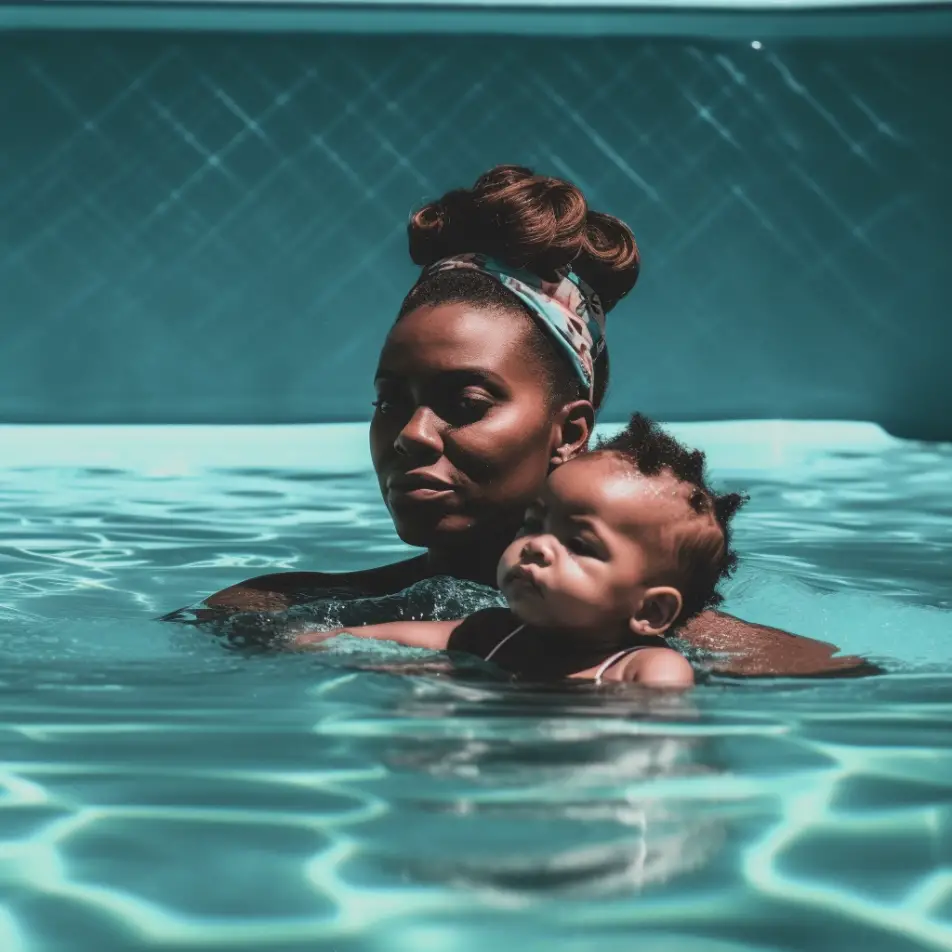
Babies have a harder time regulating their body temperature than adults, so choosing a pool with a warmer water temperature is important for their comfort and safety. A collection suitable for infants and young children should have a water temperature of around 32°C (90°F). This warm temperature helps babies feel comfortable and reduces the risk of getting too cold, which can lead to discomfort or hypothermia.
Before entering the pool, test the water temperature with your hand or a thermometer to ensure it suits your baby. Additionally, pay attention to your baby’s cues while in the water. If they show signs of being cold, such as shivering, blue lips, or fussiness, take them out of the water, wrap them in a warm towel, and let them warm up before attempting to swim again.
Remember that adult supervision is crucial when introducing your baby to swimming. Always watch your baby in and around the water, regardless of the pool’s temperature.
Note: After a pool session, there is a possibility that your baby may catch a cold. Therefore, it is recommended to check their temperature once you return home. An ear thermometer can be a useful tool for accurately measuring your baby’s temperature and monitoring for any signs of fever or discomfort. By doing so, you can promptly address any concerns and ensure your baby’s well-being.
What do babies wear as diapers for swimming?
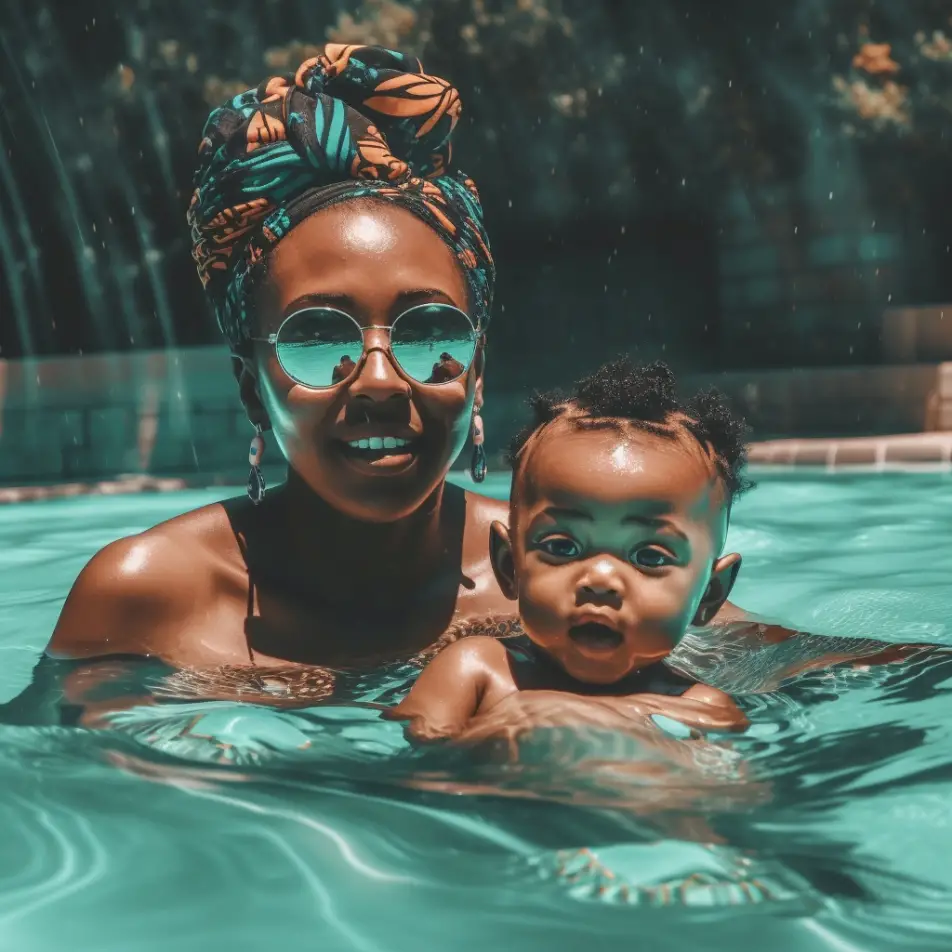
Babies should wear special swim diapers to avoid accidents while in the water. Regular diapers are unsuitable for swimming, as they can become heavy and ineffective when wet. Swim diapers come in two main types:
- Reusable swim diapers: These are made of washable, waterproof, and stretchy fabric containing solid waste while allowing water to pass through. They often have adjustable snaps or Velcro closures to ensure a snug fit. Reusable swim diapers are eco-friendly and cost-effective, as they can be washed and reused multiple times.
- Disposable swim diapers: These are designed for one-time use and are similar to regular diapers in appearance, but they do not swell up when wet. Disposable swim diapers are convenient for on-the-go situations or when traveling but can be less environmentally friendly and more expensive over time.
Regardless of the type of swim diaper you choose, ensure it fits snugly around your baby’s waist and legs to prevent leaks. Swimming diapers are not designed to be absorbent like regular diapers, so they should be put on just before entering the water and removed promptly after leaving the water.
In addition, to swim diapers, you may also want to consider dressing your baby in a swimsuit or rash guard for added sun protection and comfort while swimming. Always supervise your baby closely in and around water, regardless of the type of swim diaper they are wearing.
At what age can you dunk a baby under water?
You can consider gently submerging a baby under water once they are around 6 months old, as they have better head and neck control by this age. However, it’s essential to proceed with caution, ensure your baby is comfortable, and never force a submersion. Always closely monitor your baby’s reactions, and if they show signs of distress or discomfort, stop immediately and give them a break. Before submerging a baby, it’s a good idea to practice blowing bubbles or splashing water on their face to help them get used to the sensation and learn breath control.
Is it OK to take a 4 month old swimming?
Taking a 4-month-old baby swimming is generally safe, but it is important to take certain precautions. Babies at this age are still developing their immune systems, so choosing a clean and well-maintained pool or body of water is crucial to avoid exposing them to harmful bacteria.
Do babies float naturally?
Babies naturally tend to float, thanks to their high body fat percentage and undeveloped muscles, which make them more buoyant in water. However, this does not mean babies can safely float independently, as they are still vulnerable to drowning and other hazards in the water. It’s important to provide constant and close supervision of babies while in water and to ensure they are properly supported and kept within arm’s reach at all times.
Additionally, it’s recommended to enroll babies in a water safety and swim class specifically designed for infants and young children and to follow the guidance and instruction of a qualified instructor. Babies can safely and comfortably enjoy being in the water with proper supervision and support.
What is the best way to teach toddlers to swim?
Teaching toddlers to swim can be a fun and rewarding experience, but it’s important to approach it with patience, consistency, and safety in mind. Here are some tips for teaching toddlers to swim:
- Start with water acclimation: Before getting into formal swimming lessons, it’s important to help your toddler get comfortable in the water. This can involve splashing, blowing bubbles, and pouring water over their head.
- Use age-appropriate teaching techniques: Toddlers have short attention spans, so it’s important to use teaching techniques that are engaging and age-appropriate. This can involve using games, songs, and toys to make learning to swim fun and interactive.
- Focus on safety: Safety should be the top priority when teaching toddlers to swim. Ensure to provide close and constant supervision, use appropriate safety equipment such as flotation devices and swim diapers, and teach your toddler basic water safety skills such as floating and reaching for the side of the pool.
- Enroll in swim classes: Formal swim classes can provide structured and supervised instruction to help toddlers develop their swimming skills in a safe and supportive environment. Look for courses specifically designed for toddlers that focus on building skills gradually and at a comfortable pace for your child.
- Celebrate progress: Learning to swim can be a gradual process, and toddlers can sometimes become frustrated or overwhelmed. Celebrate your toddler’s progress and achievements and encourage them to continue practicing and building their skills over time.
Do babies naturally hold their breath underwater?
Babies have a natural “diving reflex” or “mammalian dive reflex” that can help them hold their breath and momentarily reduce their heart rate when submerged in water. This reflex is most pronounced in infants and typically starts to fade around 6 months.
However, it’s important to note that this reflex is not reliable enough to ensure a baby’s safety underwater. The diving reflex may not be triggered consistently, and young children have not yet developed the skills to hold their breath voluntarily or for extended periods.
Is 68 degree water too cold to swim?
A water temperature of 68°F (20°C) is considered quite cool for swimming, especially for extended periods. While some experienced swimmers and athletes might be accustomed to swimming in cooler water, it can be uncomfortable or even dangerous for others, particularly young children, older people, and individuals with medical conditions.
For most recreational swimmers, a comfortable water temperature typically ranges from 78°F to 82°F (25°C to 28°C). To prevent discomfort or hypothermia, a warmer water temperature of around 90°F (32°C) is recommended for babies and young children.
Swimming in cold water can rapidly lose body heat, which may cause cold shock, hypothermia, or even death in extreme cases. Suppose you plan to swim in cooler water. In that case, it’s essential to be aware of the risks, monitor your body’s reactions, and exit the water if you experience signs of cold-related issues, such as shivering numbness, or difficulty moving. Wearing a wetsuit or thermal swimwear can also help you stay warmer in cooler water temperatures.



